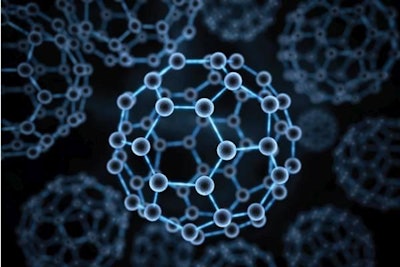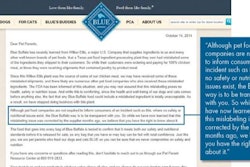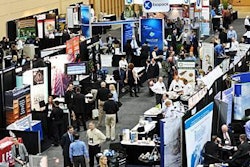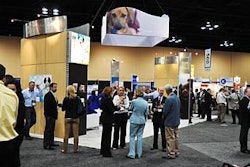
Innovation in the pet food industry continues to increase, with new ingredients as well as new processing and new packaging technologies. In considering the potential exposure of animals to nanotechnology, the US Food and Drug Administration (FDA)’s Center for Veterinary Medicine (CVM) has released draft guidance concerning the use of nanomaterials or the application of nanotechnology in food for animals, which includes pets (CVM does not distinguish between pets and commercial livestock for the safety of feed ingredients). The nanoscale range is approximately 1/100,000 the width of a human hair, or one billionth (i.e., 10−9) of a meter. FDA has stated that a material considered in the “nanoscale” range would have “at least one dimension in the size range of approximately 1 nanometer (nm) to 100 nm.”
Nanotechnology is therefore the production of products that use materials in the nanoscale range, as well as products that contain or are manufactured using certain materials that exhibit unique properties when manipulated on an atomic or molecular scale, as derived from statements made by the National Nanotechnology Initiative, a US government research and development (R&D) initiative. FDA, however, has not formally established a regulatory definition of “nanotechnology.”
The safe use of many substances is often the product of rate of absorption in the body; however, a “nanosized” version of an ingredient may affect the rate and degree of absorption, and therefore the potential toxicity, of the material. For example, the production vitamin A as a nanoparticle may increase the absorption of this fat soluble vitamin. Without proper evaluation for potential toxicity, however, a nanosized ingredient (when fed at typical “macroingredient” levels) could induce significant toxic effects in pets. For example, antioxidants could actually become prooxidants.
CVM recognizes this fact and has stated that two animal food ingredients that have the same chemical composition, but have different particle size, shape or other features at the nano-level, could have radically different physicochemical properties. Because of these potentially physicochemical changes, the ingredient may have been made unsafe. Therefore, CVM is requesting that data concerning the absorption, distribution, metabolism and excretion of the nanosized ingredient be obtained in the target animal species and compared with the same data from the macrosized ingredient, when consumed by the same animal species.
US law states that all ingredients added to food (and feed) are food additives, unless they are generally recognized, by experts qualified by scientific training and experience, to be safe under the intended levels of use (i.e., GRAS). Under the guidance for animal feed, FDA has stated that “At this time, we are not aware of any animal food ingredient engineered on the nanometer scale for which there is generally available safety data sufficient to serve as the foundation for a determination that the use of such an animal food ingredient is GRAS.” This indicates that the ability to determine a nanoscale ingredient as GRAS is an option, as long as there is sufficient information on the safety of the ingredient available in the publicly available literature.
The safety data would need to be generated on the ingredient that is the subject of the GRAS determination, as the characteristics of the nanoparticle are unique for that specific type of nanoparticle. CVM does stress, however, that meeting the standard of “general recognition” is critical in a GRAS determination. Lack of meeting this standard would likely result in the failure of a GRAS to meet the criteria of CVM’s pilot notification program. In its guidance, CVM strongly urges companies investigating the use of nanosized ingredients to dialogue with CVM prior to conducting safety studies or preparation of a GRAS dossier or filing of a food additive petition (FAP).

iStockphoto.com/nicolas
Determination of the safety of a food ingredient requires a basic set of information to prove the safety of the use of the material in the target animal species.
Determination of the safetyof a food ingredient, whether it is under the GRAS process or for a food additive petition, or whether a typical ingredient or a nanosized ingredient, requires a basic set of information to prove the safety of the use of the material in the target animal species. The ingredient must first be clearly identified, both when isolated and when added to feed. Characterization and clear identification of the ingredient by its composition, physical, chemical and biological properties are especially critical for a nanosized ingredient, because its properties likely vary from the macrosized counterpart.
A potential issue for nanosized ingredients is agglomeration when added to feed; significant agglomeration can transform the ingredient such that it is no longer consumed or digested as a nanosized particle, which could eliminate the functional properties of the nanoparticle. Because of this possible agglomeration effect, information needed to confirm that the ingredient is homogeneous throughout the feed is critical, as well as methods to identify the nanosized ingredient when contained in the feed. The manufacture of nanosized particles may also introduce potential toxic contaminants and novel byproducts; therefore, an understanding of the manufacturing process controls is also necessary to determine a safe ingredient. These and other data showing that the ingredient is safe for consumption by animals, including pets,is necessary for a nanosized ingredient.
CVM states that the general studies used to determine safety of macroingredients of the same chemical composition may not be sufficient for a nanosized ingredient, as there may be concerns of a nanosized ingredient such as too rapid an absorption rate, crossing the placenta or the blood-brain-barrier, when the same macro-sized ingredient is normally blocked from crossing these barriers. Alternatively, a nanosized ingredient may become sequestered in an organ, if the animal’s excretory system lacks a method to remove a specific nanoingredient.
The use of nanotechnology in animal feed and pet food can improve feed properties, resulting in increased health and longevity. For example, maintenance of oil stability in pet food may be enhanced by the nanoencapsulation of antioxidant preservatives. The benefits for pet food and animal feed suppliers, manufacturers and retailers is a potentially endless and lucrative market for new formulations and claims. However, in order to determine which ingredients are safe for pets, CVM is setting a high but consistent threshold for pet food ingredients at the nanoscale.
Additional nanotechnology sources
1. GFI #220: Use of Nanomaterials in Food for Animals: Draft Guidance. http://www.fda.gov/AnimalVeterinary/NewsEvents/CVMUpdates/ucm402625.htm; site last visited April 7, 2015.
2. Considering Whether an FDA-Regulated Product Involves the Application of Nanotechnology. Final Guidance. https://www.fda.gov/regulatory-information/search-fda-guidance-documents/considering-whether-fda-regulated-product-involves-application-nanotechnology; site last visited April 7, 2015.
3. National Nanotechnology Initiative; What is Nanotechnology? http://www.nano.gov/nanotech-101/what/definition; site last visited April 9, 2015.
4. Federal Food, Drug, and Cosmetic Act (FD&C Act): FD&C Act Chapters I and II: Short Title and Definitions; http://www.fda.gov/RegulatoryInformation/Legislation/FederalFoodDrugandCosmeticActFDCAct/FDCActChaptersIandIIShortTitleandDefinitions/ucm086297.htm; site last visited April 7, 2015.
5. Park EJ, Sim J, Kim Y, Han BS, Yoon C, Lee S, Cho MH, Lee BS, Kim JH. (2015) A 13-week repeated-dose oral toxicity and bioaccumulation of aluminum oxide nanoparticles in mice. Arch Toxicol. 2015 Mar; 89(3):371-9. doi: 10.1007/s00204-014-1256-0. Epub 2014 May 6. PubMed PMID: 24798085.
6. Pool, H, Quintanar, D, Figueroa, JDD, Marinho Mano, C, Bechara, JEH, Godínez, LA, Mendoza, S. (2012) Antioxidant effects of quercetin and catechin encapsulated into PLGA nanoparticles Journal of Nanomaterials, 2012, article ID: 145380.
















